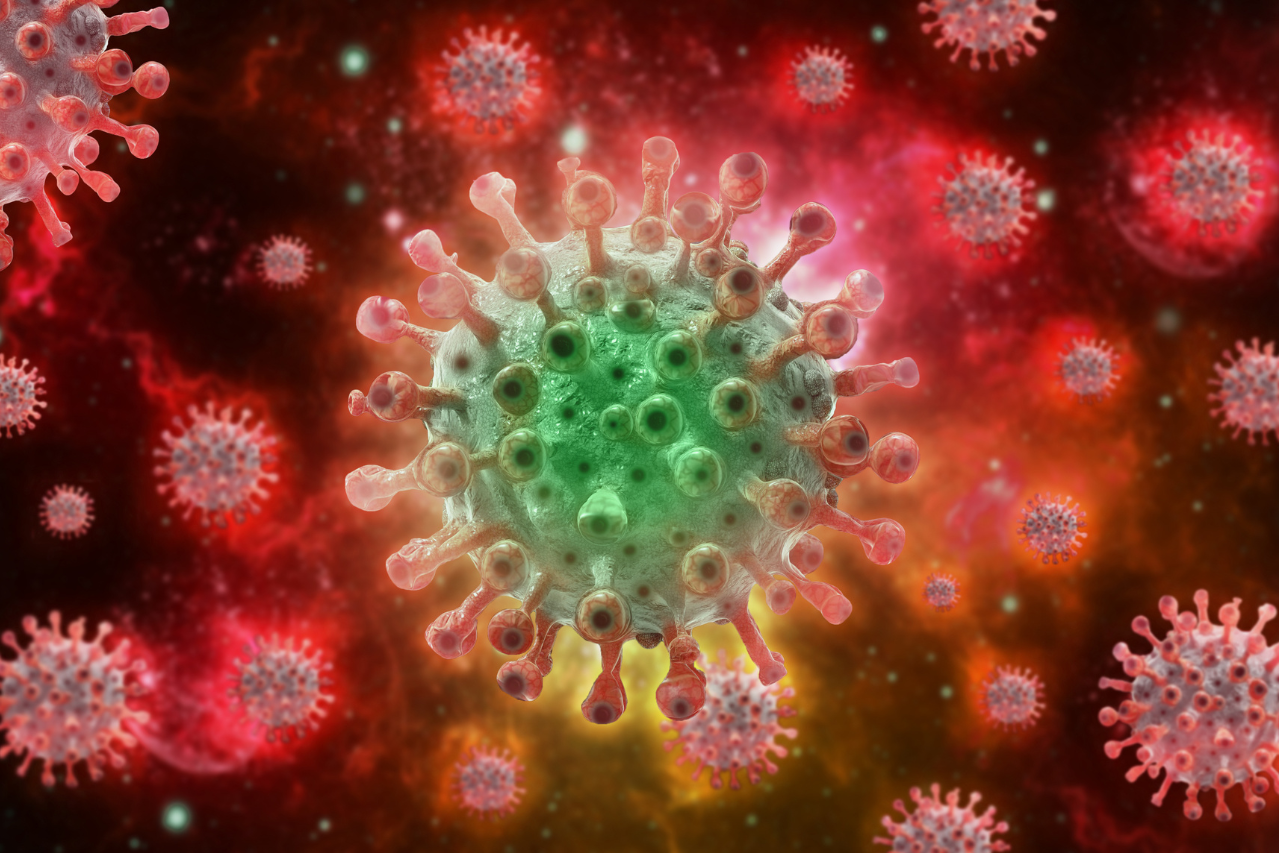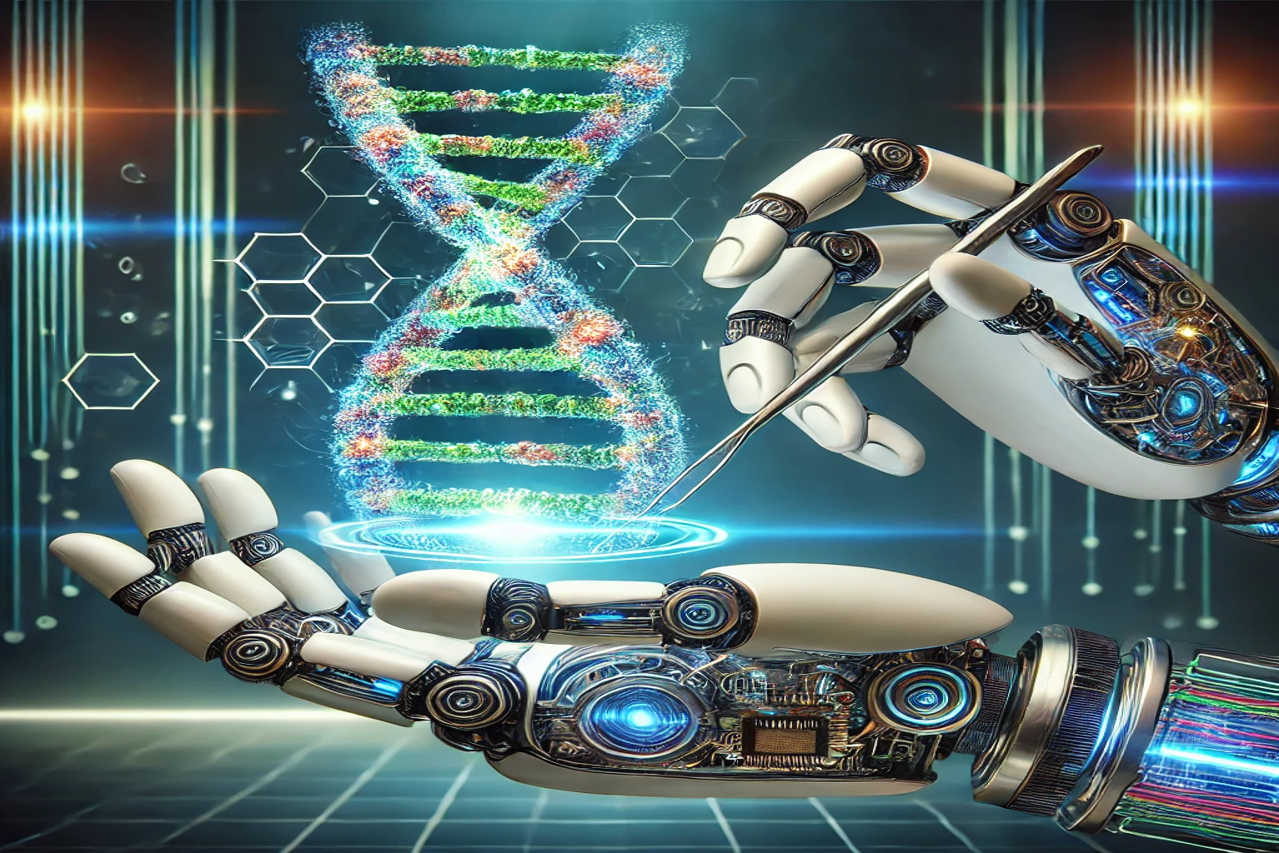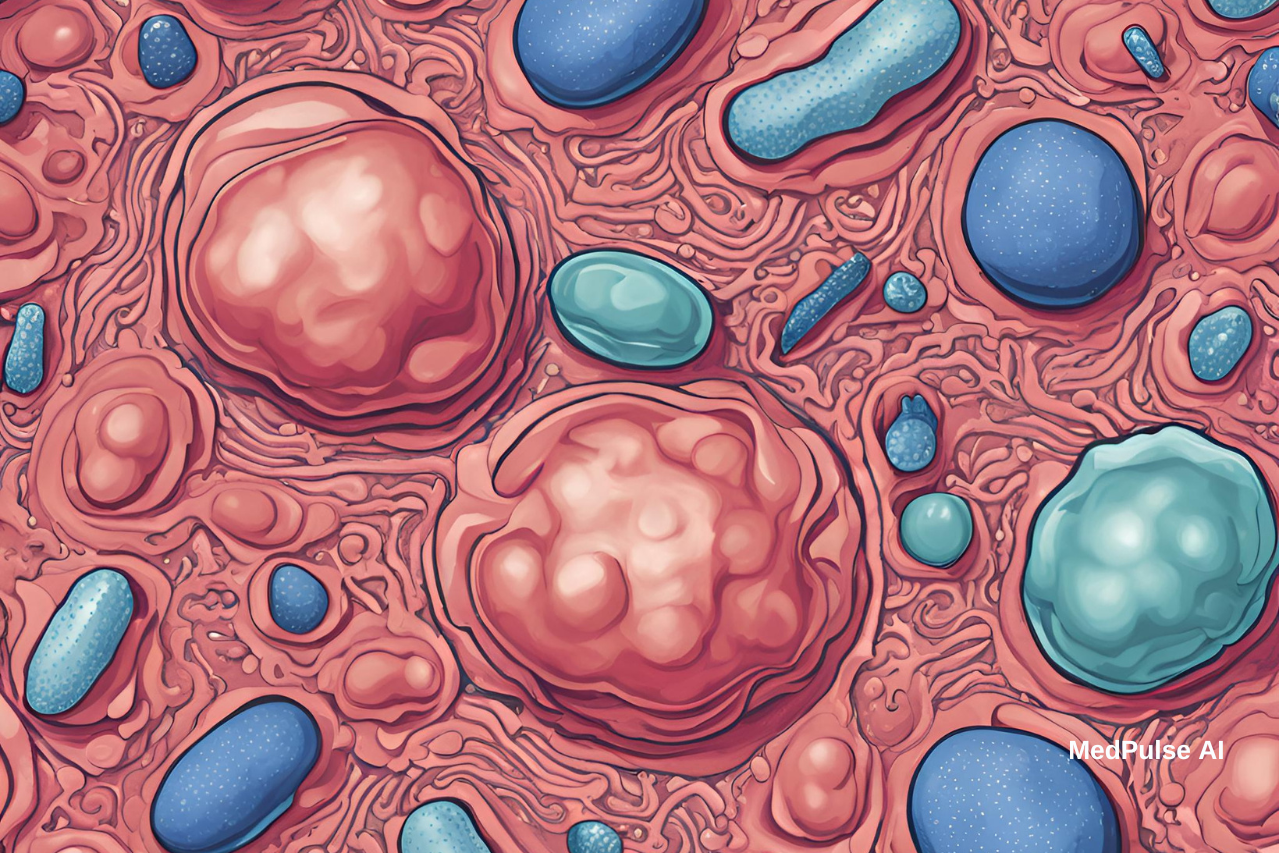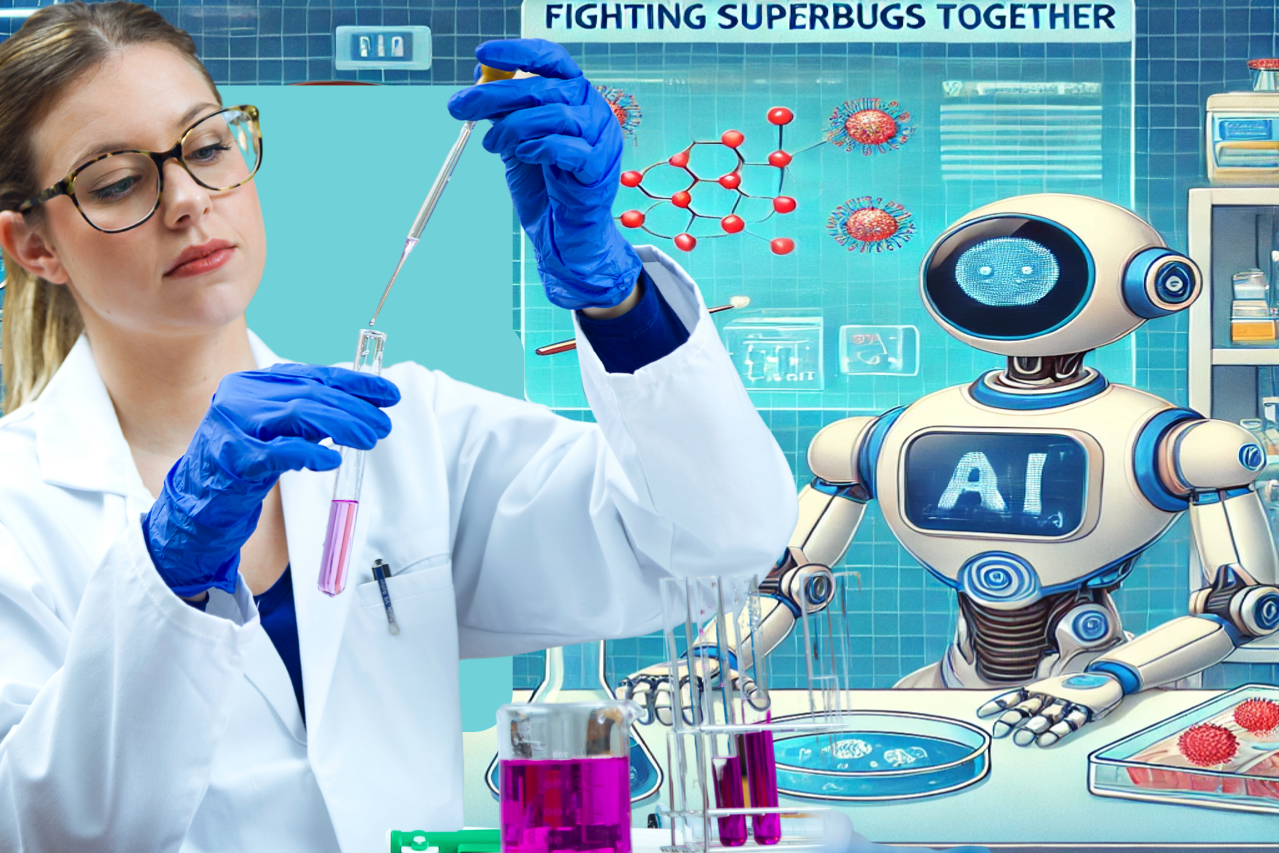The rise of drug-resistant bacteria, or “superbugs,” has become one of the most pressing challenges in healthcare today. With over 700,000 deaths annually attributed to drug-resistant infections globally, and that number projected to reach 10 million by 2050 if new solutions aren’t found, the need for innovative approaches to antibiotic development has never been more urgent.
Artificial Intelligence is emerging as a powerful ally in this fight, particularly in its ability to develop antibiotics tailored to combat specific diseases. But can AI truly create antibiotics that target precise pathogens or infections? Let’s explore how AI is reshaping this field and how it could revolutionize disease-specific antibiotics.
The Traditional Approach vs. AI-Enhanced Antibiotic Development
Developing a new antibiotic is traditionally a costly and time-consuming process, often requiring over a decade and billions of dollars. This process has largely relied on testing existing compounds or slightly modifying known structures to discover new antibiotics, which frequently leads to incremental rather than breakthrough progress. However, AI introduces a paradigm shift. By leveraging machine learning and deep learning, AI can streamline the discovery process, speeding it up by identifying promising compounds much faster and focusing on disease-specific bacterial strains.
For instance, AI models trained on millions of data points—from bacterial genomes to compound interactions—can identify specific molecular structures that target particular bacteria or even mutations within those bacteria. This precision allows scientists to develop antibiotics tailored to the unique needs of infections caused by resistant strains of bacteria like Mycobacterium tuberculosis (TB) or Neisseria gonorrhoeae (gonorrhea).
How AI Helps Create Disease-Specific Antibiotics
AI-driven antibiotic discovery involves several advanced techniques that make disease-specific antibiotics possible. Here’s how:
Pathogen-Specific Data Analysis
- Genomic and Proteomic Profiling: AI can analyze the genetic and protein structures of specific bacteria, identifying unique features or weaknesses. For instance, AI models can isolate the genes that make certain bacterial strains resistant to conventional antibiotics, allowing scientists to design drugs that specifically target those genes.
- Studying Resistance Mechanisms: By examining genetic mutations and resistance patterns in pathogens, AI can predict how and why specific bacteria resist treatment. This data allows for creating antibiotics that bypass or directly counteract these resistance mechanisms.
Targeted Molecule Generation
- Designing Precise Compounds: Generative AI models, such as those based on deep learning, can create new molecular structures that interact with bacteria in unique ways. For example, if a disease-causing bacterium relies on a specific enzyme to survive, AI can design compounds that block that enzyme, effectively neutralizing the infection.
- Structure-Based Drug Design: Using the 3D structure of the target pathogen, AI can simulate how different compounds might “fit” into the pathogen’s vital proteins or cellular structures, making it possible to design antibiotics that specifically target those areas.
Predictive Modeling for Effective Disease-Specific Antibiotics
- Simulating Bacterial Responses: AI can model how bacteria are likely to respond to specific compounds, predicting effectiveness before any actual lab testing occurs. For example, a model might predict that a particular compound will be highly effective against multi-drug-resistant Staphylococcus aureus (MRSA), thus guiding researchers toward more promising candidates for lab testing.
- Optimizing Pharmacokinetics and Pharmacodynamics: For a compound to be effective as an antibiotic, it must reach the infection site in sufficient concentrations and stay active for an adequate time. AI can predict how well a drug will be absorbed, distributed, metabolized, and excreted in the body, helping researchers optimize it specifically for infections like tuberculosis that require prolonged treatment.
AI in Disease-Specific Antibiotics
Several notable AI-driven efforts are already showing promise in creating antibiotics for specific diseases:
- Tuberculosis (TB): One of the deadliest infectious diseases, TB, has seen a resurgence of drug-resistant strains. AI models have been used to analyze the genome of Mycobacterium tuberculosis, identifying specific mutations responsible for resistance. By targeting these mutations, researchers are developing drugs that are particularly effective against drug-resistant TB strains. Studies have shown that these AI-guided compounds can reduce the time needed for drug discovery by up to 40%.
- Gonorrhea: Neisseria gonorrhoeae, the bacteria responsible for gonorrhea, has shown increasing resistance to nearly all conventional antibiotics. AI is being used to find compounds that target the bacteria’s cell wall synthesis, a mechanism unique to gonorrhea, creating a pathway for disease-specific antibiotics. Early-stage AI discoveries have already shown promising results in animal models.
- COVID-19 and Secondary Bacterial Infections: Secondary bacterial infections in COVID-19 patients have led to a rise in antibiotic use, often leading to resistant strains. AI has been employed to identify antibiotics that are effective specifically against these secondary infections, reducing the impact of resistance while addressing the specific pathogens affecting COVID-19 patients.
Key Benefits of Disease-Specific Antibiotics Using AI
Creating antibiotics tailored to specific diseases offers numerous advantages:
- Increased Effectiveness: Targeted antibiotics are more likely to be effective because they are designed specifically to combat the pathogen responsible for the infection, rather than taking a broad-spectrum approach.
- Reduced Resistance: By focusing on specific pathogens, there’s less collateral damage to the body’s beneficial bacteria, which reduces the likelihood of resistance developing.
- Enhanced Patient Outcomes: Disease-specific antibiotics mean fewer treatment failures and better patient outcomes, particularly in cases of chronic or resistant infections.
- Potential for Personalized Medicine: As AI continues to evolve, it may one day allow for antibiotics to be tailored to individual patients’ infections, taking into account not only the type of pathogen but also the patient’s unique biological makeup.
Challenges and Limitations
While AI is a powerful tool in developing disease-specific antibiotics, there are challenges:
- Data Availability: Developing AI models requires large datasets, which may not be available for less common or emerging pathogens. Without sufficient data, AI’s ability to accurately predict effective compounds is limited.
- Validation and Testing: AI predictions must be validated in the lab and in clinical trials, a process that still requires considerable time and resources. Moving from AI-generated models to approved drugs involves multiple phases of testing, regulatory hurdles, and potential setbacks.
- Economic Viability: Creating disease-specific antibiotics can be costly, and given the often limited market for these drugs, there may be fewer financial incentives for pharmaceutical companies to invest in such research.
The Future of Disease-Specific Antibiotics with AI
Despite these challenges, the future of AI in creating disease-specific antibiotics is promising. As data collection improves, especially with advances in genomics and proteomics, AI models will become even more powerful and accurate. Governments and organizations are also recognizing the value of AI in this field and are increasingly investing in initiatives to support AI-driven drug discovery.
Furthermore, the emergence of AI platforms that operate in open-access environments (such as MIT’s Collins Lab’s generative AI platform) allows for collaborative research that could accelerate discoveries globally. This model enables researchers worldwide to contribute data, share findings, and enhance AI algorithms for a more comprehensive approach to antibiotic development.
In a world where antimicrobial resistance continues to rise, AI offers a proactive approach to fighting drug-resistant bacteria. By creating antibiotics tailored to specific diseases, AI not only speeds up the development process but also brings us closer to a future where the right treatment can be available for every infection.
An answer to the question, “Can AI create antibiotics for specific diseases?”—the answer is a resounding yes, but with caveats. AI can indeed design antibiotics that are targeted at specific diseases, leveraging genomic insights, predictive modeling, and precise molecule generation to combat particular pathogens. However, realizing the full potential of disease-specific antibiotics with AI requires overcoming hurdles in data availability, economic incentives, and clinical testing.
As AI technology advances, the hope is that it will continue to deliver more efficient, effective, and targeted treatments, shifting the paradigm in how we fight infectious diseases. The potential is enormous, and while challenges remain, AI is poised to make disease-specific antibiotics not only possible but also an essential part of our toolkit against drug-resistant infections.
Are you interested in how AI is changing healthcare? Subscribe to our newsletter, “PulsePoint,” for updates, insights, and trends on AI innovations in healthcare.




